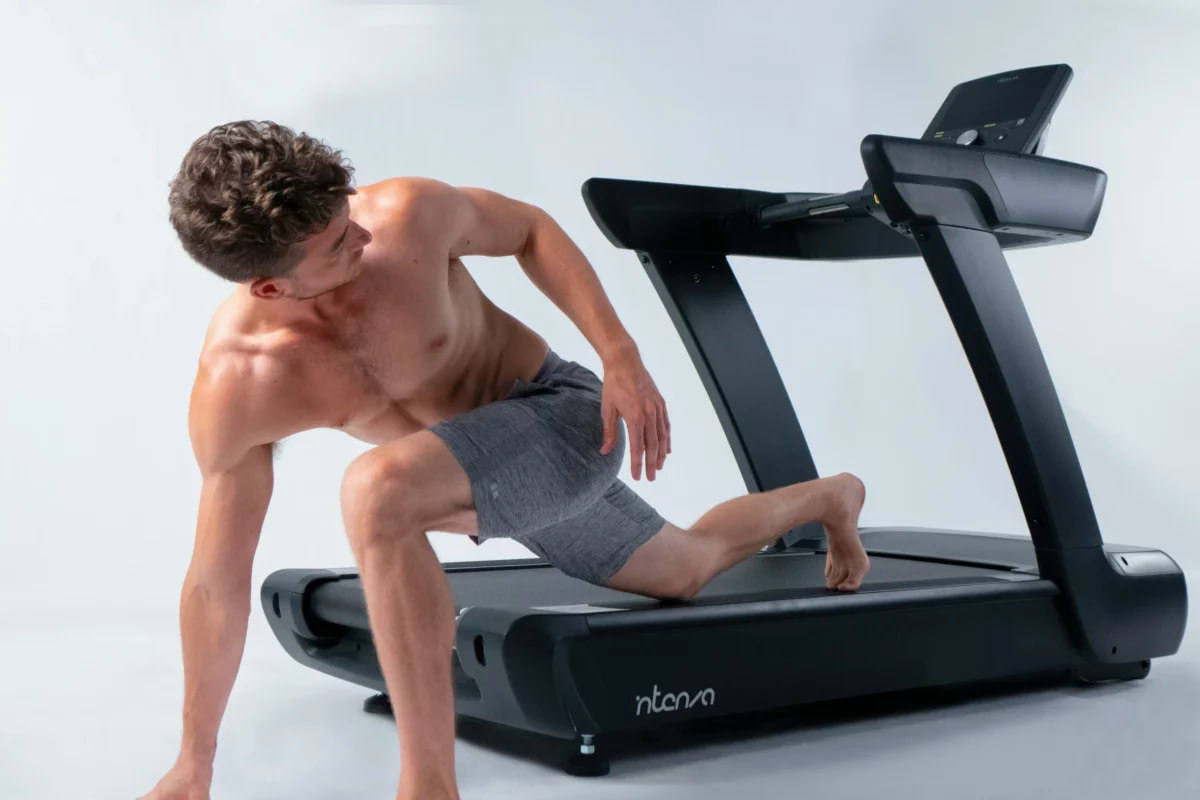Treadmill running and outdoor running both offer excellent ways to improve cardiovascular health, build endurance, and manage stress. With treadmills available in nearly every gym and the great outdoors always accessible, runners can easily choose their preferred method. The debate on whether treadmill running or outdoor running is superior continues, focusing on accessibility, personal preference, and individual goals.
As you consider the merits of indoor versus outdoor running, it’s essential to assess how each option fits into your routine and supports your fitness objectives. This exploration looks at the distinctions between the two, not to declare a winner, but to guide you toward a path that best suits your lifestyle. Remember, the best run is one that happens consistently, regardless of the setting. So lace up, step out or step on, and find your stride.
Treadmill Versus Outdoor Running
Effectiveness of Treadmill Versus Outdoor Running
Running engages your muscles and requires stamina whether you’re on a treadmill or braving the elements. Treadmills offer a lower-impact workout with controlled conditions, ideal for those needing a gentler option or recovering from injuries. In contrast, running outside introduces varied terrain that challenges balance and builds resilience, enhancing bone density and muscle activation. Both can serve your training goals; selecting one depends on your preference for consistency or environmental adaptability.
Popular posts:
Safety of Running in Reverse on a Treadmill
When considering the safety of unconventional treadmill workouts, like walking or running backward, caution is paramount. Although these exercises can improve agility and muscle strength, they also increase the risk of injury. It’s crucial to start slow, possibly with assistance or support, until you’re comfortable with the movement to ensure safety.
Incline Settings on a Treadmill
While running at a 1% incline on a treadmill is often suggested to replicate outdoor conditions, this primarily applies to those running faster than an eight-minute mile. Utilizing incline variations during treadmill workouts activates different muscles and boosts calorie burn, contributing to weight loss efforts and endurance.
Misconceptions About Treadmill Running
Treadmill running isn’t inherently negative; perceptions of difficulty vary among runners. For some, the mental ease of using a treadmill for their cardio workout makes it a preferable choice. Besides, running, whether on a treadmill or outside, is an excellent aerobic exercise, and the benefits in terms of health and calorie burn are comparable.
In summary, your choice between treadmill running and outdoor running should be guided by personal goals, injury prevention, and enjoyment. Both can be part of a successful training regimen, whether you’re aiming for weight loss, improved endurance, or preparing for a marathon. As long as you’re running, you’re already on the right track.
The Advantages of Treadmill Running Over Outdoor Runs
Easy Accessibility
Opting to run on a treadmill can often be a matter of sheer convenience. It doesn’t matter if you have a busy schedule; a home treadmill allows for a run at any free moment, eliminating the need to commute to a trail or park. Those with gym memberships can combine their strength training with cardio sessions, thanks to the easy access to treadmills before or after work.
Unaffected by Weather Elements
Adverse weather conditions can derail your training plans. Whether it’s avoiding the hazards of black ice in colder regions or the discomfort and risks of high temperatures in warmer climates, the controlled environment of indoor running provides a consistent and reliable setting for your workouts.
Pace and Terrain Customization
The ability to adjust speed and incline at the touch of a button is a significant benefit of treadmill workouts. This controlled pace and terrain variation make it possible to simulate different running courses and conditions, which is ideal for targeted training plans.
Execute Multiple Tasks Simultaneously
A treadmill run can be more than just an exercise session. It’s an opportunity to multitask. Listen to your favorite music, catch up on shows, or even join a conference call—all while logging miles. The static location of the treadmill allows for these activities without the risks associated with divided attention outdoors.
Personal Safety Enhancements
Running indoors can also alleviate safety concerns related to low visibility during early morning or evening runs, uncertain neighborhoods, or secluded trails. A treadmill in a gym or at home offers a secure environment, free from traffic and other potential outdoor risks.
Supports Joint Well-being
Treadmills are often designed with advanced shock absorption capabilities, offering a gentler impact on knees and other joints compared to the hard surfaces of outdoor running. This cushioning can help reduce the risk of joint pain and injuries, potentially making treadmill running a better option for those concerned about joint health.
Treadmill Limitations
Challenges with Downhill Running Preparation
If your treadmill doesn’t feature a decline function, which is still uncommon in most gym settings, you miss out on the unique benefits of downhill running. Training for races with downhill segments is critical because descending requires different muscle engagement and affects how you run. Preparing your body for downhill fatigue is just as vital as conditioning it for uphill challenges to ensure your muscles are race-ready.
Limitations in Movement Variability
Treadmills restrict you to a forward motion, which can be a disadvantage compared to the diverse movements experienced in outdoor running. In the open air, your run encompasses various turns and terrain types, engaging stabilizer muscles and better mimicking real-world running conditions. Such variety is essential not only for race training but also for reducing injury risk by building up those lesser-used muscles that provide support and stability.
Possible Alterations to Running Form
Treadmill exercise could alter your natural running form. A study indicates that exclusive treadmill use may change your foot strike pattern, leading to uneven distribution of impact. While this doesn’t necessarily increase overall injury risk, it could shift where potential injuries might occur. Understanding how your form adjusts on a treadmill versus open ground can help you maintain balance in your training regimen.
| Consideration | Treadmill Use | Outdoor Running |
|---|---|---|
| Impact Distribution | May alter foot strike | Natural impact variation |
| Muscle Engagement | Consistent, less varied | Diverse, stabilizing |
| Injury Potential | Different areas affected | Broader impact |
| Training for Terrain | Limited incline options | Natural hills and slopes |
| Movement Diversity | Forward motion only | Lateral and turns |
Remember, integrating variety in your workout by including both treadmill and outdoor runs can offer a balanced approach, allowing you to enjoy the benefits of both while minimizing the drawbacks. It’s essential to stay hydrated, allow time for rest, and be mindful of your bones’ health and overall well-being regardless of where you choose to run.
Advantages of Exercising in the Open Air
Diverse Environments
When you choose to run outdoors, you’re met with a plethora of environments. From the softness of grass to the firmness of asphalt, each surface presents a unique challenge that can enhance your physical engagement. Outdoor terrains vary greatly, and even seemingly flat landscapes can surprise you with hidden inclines that help strengthen different muscle groups and can reduce the potential for repetitive use injuries.
Easily Attainable
No matter where you find yourself, running doesn’t require much more than a pair of
The Fresh Outdoors
Taking your run outside gifts you with an experience that indoor treadmills cannot replicate – the invigorating fresh air and serene visuals of nature. The emotional lift from this exposure is substantial, potentially ramping up your mood and relieving stress, anxiety, and depression. Engaging with the outdoors isn’t just a feast for the senses; it’s also a natural source of vitamin D – an essential boost for bone health and immunity.
Economically Favorable
While initial investments in quality gear are inevitable, shifting your runs to the outside sidesteps expensive gym memberships or the need for home equipment. Running without the financial burden of additional costs leaves you free to enjoy your workouts without concern for anything more than the trail ahead. Of course, budgeting for essentials still stands, but these serve you just as well outdoors as they would on the treadmill.
In short, taking your workouts outside allows you to revel in a diverse range of environments, take advantage of accessible locations, breathe in revitalizing air amidst inspiring scenery, and save on exercise costs. Whether it’s a morning jog to capitalize on daylight hours, a stride through golden hours for a touch of sunshine, or a vigorous trail run, every step outside offers immense benefits for both your physical and mental well-being.
Choosing Your Running Environment: Indoors or Outdoors
When planning your run, consider the weather and available daylight. On days with poor weather or when it’s dark, a treadmill provides a safe and controlled environment. On brighter days, venturing outdoors can offer fresh air and scenic variety, which benefits both your physical and mental well-being.
Your Personal Preference:
- Opt for treadmill runs when conditions outside are less than ideal.
- Take your runs outside to enjoy natural elements when possible.
Remember, what works for you is a matter of personal choice—there’s no one-size-fits-all answer. Your decision should align with your comfort and enjoyment to maintain a consistent fitness routine.
Commonly Asked Questions
Weight Loss Potential: Treadmill vs. Outdoor Running
When considering weight loss, both treadmill and outdoor running can be effective. Outdoor running often has varying terrain and wind resistance, which can increase calorie burn. On a treadmill, you can adjust the pace and incline, potentially leading to substantial calorie expenditure as well. Remember, the key to weight loss is a consistent calorie deficit, regardless of the running method.
Comparing Calorie Burn: Treadmill vs. Outdoor
- Treadmill Running: Calorie burn can be managed by adjusting the speed and incline.
- Outdoor Running: Calorie expenditure might be higher due to natural resistances like wind and varied terrain.
Ideal Treadmill Incline to Simulate Outdoor Running
To better simulate the resistance of outdoor running, setting your treadmill to an incline of 1% to 2% can be effective. This minor adjustment can help mimic the conditions of running outside.
Treadmill Quality and Features
Not all treadmills are created equal. Key features to look for include:
- Sturdy frame: Ensures durability.
- Motor power: Affects how smooth the run will be.
- Cushioning: Protects your joints.
- Incline and speed options: Allows for varied workouts.
Pros and Cons: Treadmill vs. Outdoor Running
- Treadmill Running: Benefits include controlled environment, convenience, and safety. Drawbacks can be the cost of equipment and potential boredom.
- Outdoor Running: Offers variable scenery and terrain. The downside could be unpredictable weather and safety concerns.
Joint Health: Treadmill vs. Outdoor Running
Treadmill running may offer some advantages for joint health due to the generally softer running surface, which can result in less impact compared to the harder surfaces found outdoors.
Fitness Benefits: Treadmill and Outdoor Running Equivalency
Both treadmill and outdoor running can provide comprehensive fitness benefits, including improving cardiovascular health, stamina, and muscle strength, provided the effort and duration are comparable.
Speed Variation in Treadmill vs. Outdoor Running
Running speeds can vary with each method:
- Treadmill: Speed is consistent as set by the user.
- Outdoor: Speed can fluctuate naturally with terrain changes and environmental factors.





